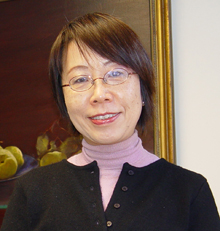
Corresponding Research Fellow
Ph.D., Ecole des Hautes Etudes en Sciences Sociales, Paris
Social History of the Ming and Qing Dynasties, Socio-cultural History of the Late Imperial Period
Education:
Ph.D., EHESS, Paris (1980)
Current Positions:
Emeritus Professor, Hong Kong Institute for the Humanities and Social Sciences, University of Hong Kong
Correspondence Research Fellow, Institute of History and Philology, Academia Sinica (2012.8- )
Previous Positions:
Doctorat du 3e cycle, history, EHESS, Paris (1980)
Associate Research Fellow (1982-87), Research Fellow (1987-2004), Institute for Social Sciences and Philosophy (1997-99 Deputy Director, 1999/8-2003/12 Director); Research Fellow (2004-2010), Institute of History and Philology; Joint Appointment (2004-2009), Research Center for Humanities and Social Sciences (2004/8-08/7 Initiator and convener of the Project “History of Health”), Academia Sinica.
Fulbright post-doctoral fellow at Harvard University and Princeton University (1985-86)
Convener of the discipline of History, National Science Council (1994-99)
Visiting fellow at INSERM, Paris (1995-96)
Member of the School of Historical Studies, Institute for Advanced Study, Princeton (2004/1-7)
Vice-President, Chiang Ching-kuo Foundation for International Scholarly Exchange (2004/8-08/7)
Professor of History, History Department, Chinese University of Hong Kong (2008/8-2010/12)
Honorary Professor, School of Humanities, Hong Kong University (2009/7-2010/12)
Honorary Professor, Department of Chinese Culture, Hong Kong Polytechnic University (2010/8—)
Adjunct Professor, History Department, Chinese University of Hong Kong (2011/1—)
Director and Chair Professor of History, Hong Kong Institute for the Humanities and Social Sciences, University of Hong Kong (2011-2023)
Joseph Needham-Philip Mao Professor in Chinese History, Science and Civilization (2012-2023)
1995, 2000, 2004 Award for Outstanding Research, National Science Council;
1990, 1992, 1993 Award for Excellent Research, National Science Council
2009 Ministry of Education Academic Award (Humanities)
2000-2001 Membre du Conseil scientifique of the Institut de Recherche pour le Développement, Paris
2004-2008 Membre du Conseil scientifique of the Ecole Française d'Extrême Orient
2006-2010 Member of the Social Sciences and Humanities panel for Starting Grants of the European Research Council
2010— Jury member of the French Agence Nationale de la Recherche
2012—Member of the Academic Board (Conseil scientifique) of the RFIEA ( Réseau franҫais des Instituts d’Etudes avancées) (French Network of Institutes for Advanced Study).
2014 Chevalier dans l'Ordre des Palmes académiques, French Ministry of National Education (Higher Education and Research)